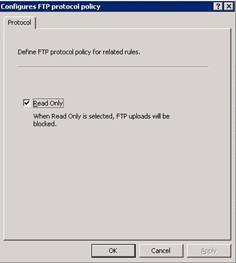I ran across a cool add-on to IE 7 called IE7Pro. I use a lot of extensions to Firefox, but this add-on to IE has a lot of helpful features rolled into one install. Here is a list of some of its features:
-
Webpage capturer
-
Ad blocker
-
Greasemonkey
-
Advanced Tab Browsing Management
-
Double click to close tab
-
Crash recovery
-
Select the external program to view page source
-
Tab history manager
-
Refresh tab interval
-
-
Inline search
-
Spell checking of text you enter in forms
-
Proxy switcher
-
Super Drag Drop
[more]The inline search adds a search bar like found in Firefox that finds as you type. You use the F3 and Enter key to cycle to the next result and you can highlight all the results on the page see them all at once. If you'd rather search the web instead of the current page, you have the option to highlight the word or phrase, right-click it, and choose the Search With menu item. The Search With function will display the search results for the term in a new tab using Google, Yahoo!, Live Search, or another search engine of your choice.
The Refresh Current Tab feature is a cool way to ensure your always looking at current information on website that don't automatically refresh on their own. This is great for situations where you want to keep a news site or a web based monitoring utility up all day long and view the latest information without having to refresh the page everytime you look at it.
My favorite feature is the webpage capturer. This feature enables you to easily save a page to an image file. No more Ctrl+Print Screen and pasting into MS Paint or Word. Now you can save screenshots directly from the browser into a JPG, BMP, GIF, PNG, or TIFF. This is a real time saver.

